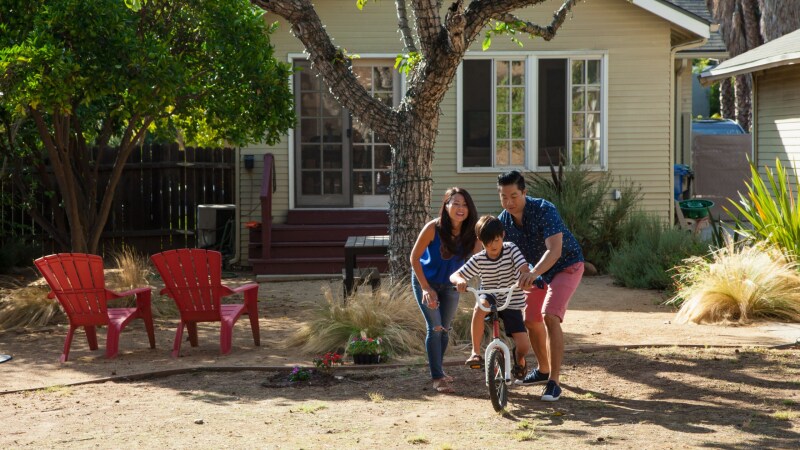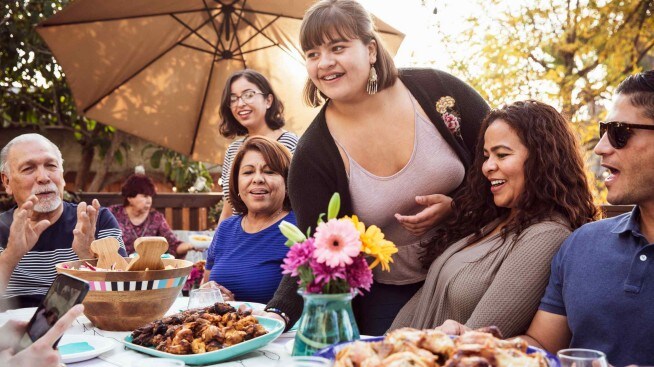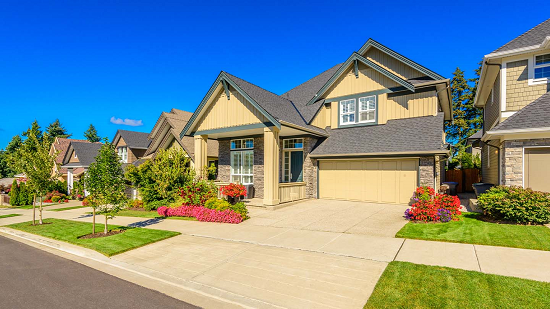Picking the best neighborhood to live in

Finding a place to call home is more than just choosing a house — it's also about picking the right neighborhood. Your next neighborhood could be where you make lifelong friends, discover new hobbies or find the peace and quiet you've been longing for. So, how do you navigate the process to find the best neighborhood for you?
Factors to consider
Choosing where to live is a big decision. From the people you meet and the friends you might make to where significant portions of your time will go, where you live has the potential to impact many aspects of your lifestyle. Let’s examine a few of the factors you might want to consider when picking your next neighborhood.
Personal circumstances
If you’re looking for a shorter commute, living closer to your workplace might reduce travel time. Parents or those planning a family, on the other hand, will likely place more emphasis on the quality of local school systems — both for their children’s education and for the potential resale value of their home. Your current and future circumstances are, for many, one of the first considerations to weigh.
Public transportation
Access to public transportation influences how easy it is to get around, especially for those who don’t own a vehicle or prefer not to use one. A well-connected neighborhood could provide better access to local amenities and potentially shave meaningful time off your daily commute.
Safety
Feeling safe and secure in your home is fundamental. As such, researching local crime rates and community safety initiatives could help you make a more informed decision about which neighborhoods would make you feel safer.
Affordability
Beyond your new home’s price, property taxes, insurance rates and the general cost of living in the area will also add up over time. Accounting for these additional expenses ahead of time might help prevent any unexpected financial surprises down the line.
Community and lifestyle amenities
Your neighborhood is an evolving, ever-changing organism with a personality of its own. The activities and amenities it offers will play an important role in your day-to-day life. This includes the availability of healthcare services, the vibrancy of the local arts and culture scene, the presence of recreational facilities, and the frequency of community events. Once you’ve narrowed down your list to a few choices that align with the previous factors, the lifestyle and culture of your local neighborhood could become a prime consideration.
What makes a neighborhood “good”?
The quest for a “good” neighborhood often lies at the heart of how to choose where to live. But what does “good” mean? The things that make a neighborhood “good” will be different for everyone, influenced by individual needs, values and preferences.
Traditional perspectives on a “good” neighborhood
Generally, a set of common factors routinely appear when discussing “good” neighborhoods. Safety, for instance, is a common priority. Low crime rates and well-lit, well-maintained streets are near-universal in their appeal. The same goes for good schools and a vibrant local economy. But these factors alone don’t necessarily paint a holistic picture of the living, breathing thing that is a “good” neighborhood.
Defining “good” for you
While these traditional measures are a useful starting point, the definition of what makes a neighborhood “good” must ultimately be a personal one. The specifics of what makes a neighborhood good for you are largely dependent on your lifestyle. What’s perfect for a retiree may not suit a young family and vice versa. The key, then, is to identify the values and characteristics that subjectively matter most to you in your daily life.
Perhaps, for you, a “good” neighborhood is one that’s quiet, with large yards and plenty of privacy. Maybe it’s a bustling urban neighborhood within walking distance of nightlife and cultural events. Or, maybe, its proximity to outdoor recreation, like parks or hiking trails instead. When determining what makes a neighborhood good, it helps to consider both the traditional guidelines and your own subjective tastes and personal desires.
Comparing locations
Eventually, you’ll have to start comparing neighborhoods, each with its own characteristics that impact its overall appeal. By understanding what you want and need in your day-to-day life, you may be able to whittle your choices down to a select few and start house hunting.
City living vs. rural and suburban retreats
For many, choosing city or country living is one of your first considerations. City neighborhoods may offer myriad opportunities and conveniences, often boasting a wealth of amenities such as shopping centers, restaurants, museums and theaters — all within reach. Public transportation may also be more robust, allowing you to commute and travel without a personal vehicle. But the hustle and bustle of the city presents its own potential drawbacks too. City life often means dealing with much more noise and less personal space.
On the other end of the spectrum, rural areas may provide a wholly different set of benefits and drawbacks. These locations usually offer much larger properties for each price point, more privacy and a closer connection to nature, at the expense of fewer nearby amenities. For those unsure about making the “right” or “wrong” choice between the two, suburban neighborhoods may provide something of a “happy medium” that balances space, peace and accessibility to some urban amenities.
How to pick where to live
Choosing where to live involves a thoughtful blend of objective analysis and subjective preferences. But how do you get started picking where to live?
Conduct thorough research
Understanding your options is the first step in making a more informed decision. There are countless resources to gather as much information as possible about potential neighborhoods, providing a wealth of data on factors like local crime rates, school systems, public transportation facilities, local economy and cost of living. Online neighborhood guides, local news outlets and community forums may be great starting points that offer valuable insights into each of your potential choices.
Understand your priorities
Reflect on what's important to you in a neighborhood. Do you want a vibrant social scene or do you value peace and quiet above all else? Are you drawn to outdoor recreational activities or are cultural amenities more important to you? What about your commute to work or school? Remember, there's no universal definition of a "good" neighborhood — it's what feels good to you.
Visit potential neighborhoods
Once you've shortlisted a few potential neighborhoods, you could plan visits to each one. There's nothing like spending time in an area to get a real feel for it. Take a walk around, visit local shops and parks and consider talking to residents.
Take your time
This isn’t a decision that should be rushed; take your time to understand each neighborhood's pros and cons and how they align with your priorities.
In summary
Choosing the best neighborhood is a blend of research, self-awareness and on-ground exploration. It's about understanding key factors, aligning them with your personal circumstances and learning to compare diverse locations effectively. Remember, there's no universal blueprint for the “best neighborhood” — it's unique for everyone. Now that you're armed with this knowledge, perhaps it's time to consider how you might prepare for your next move on this exciting journey.



